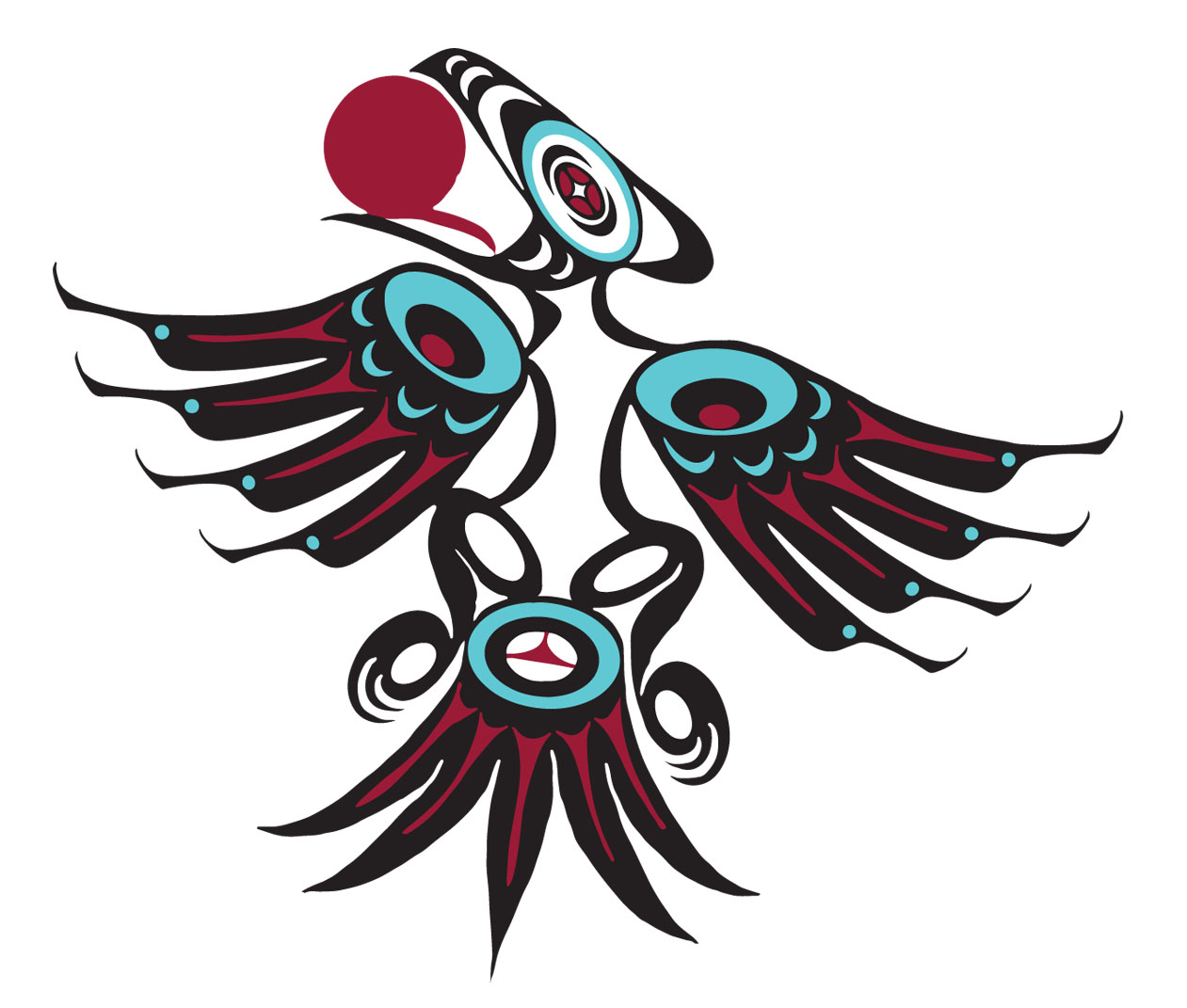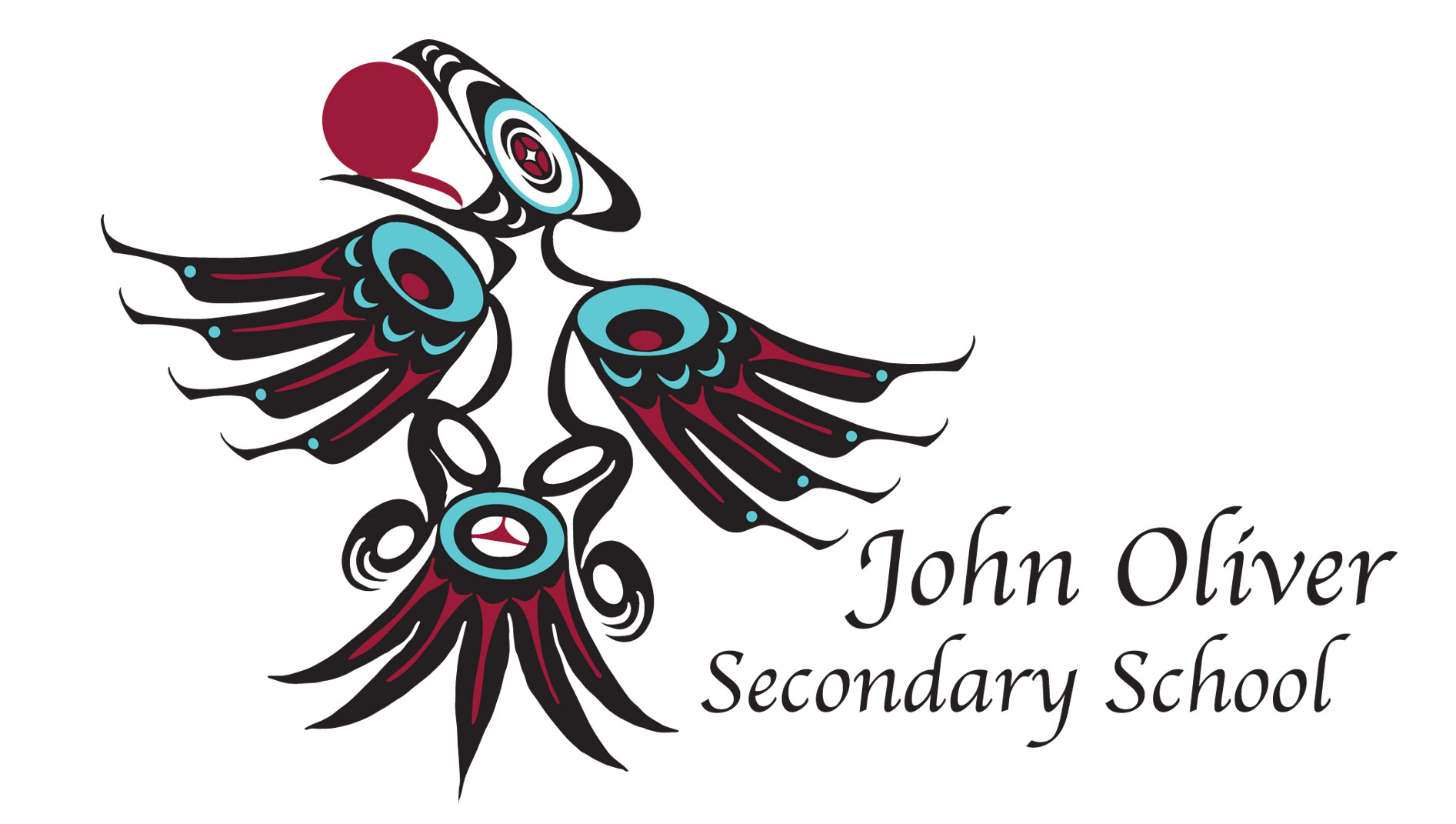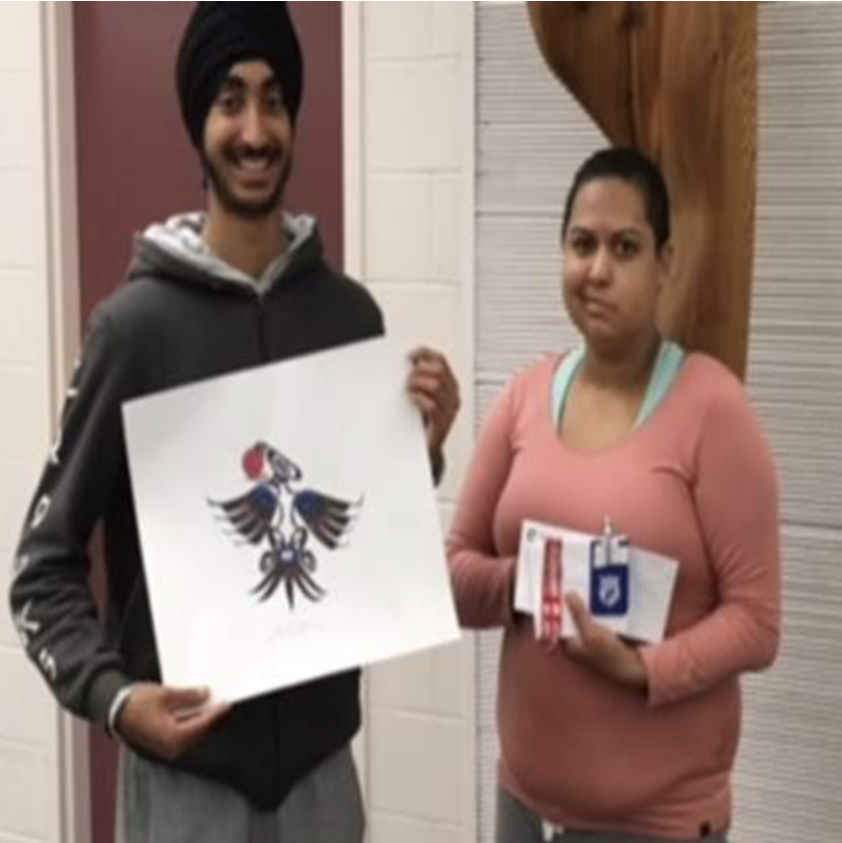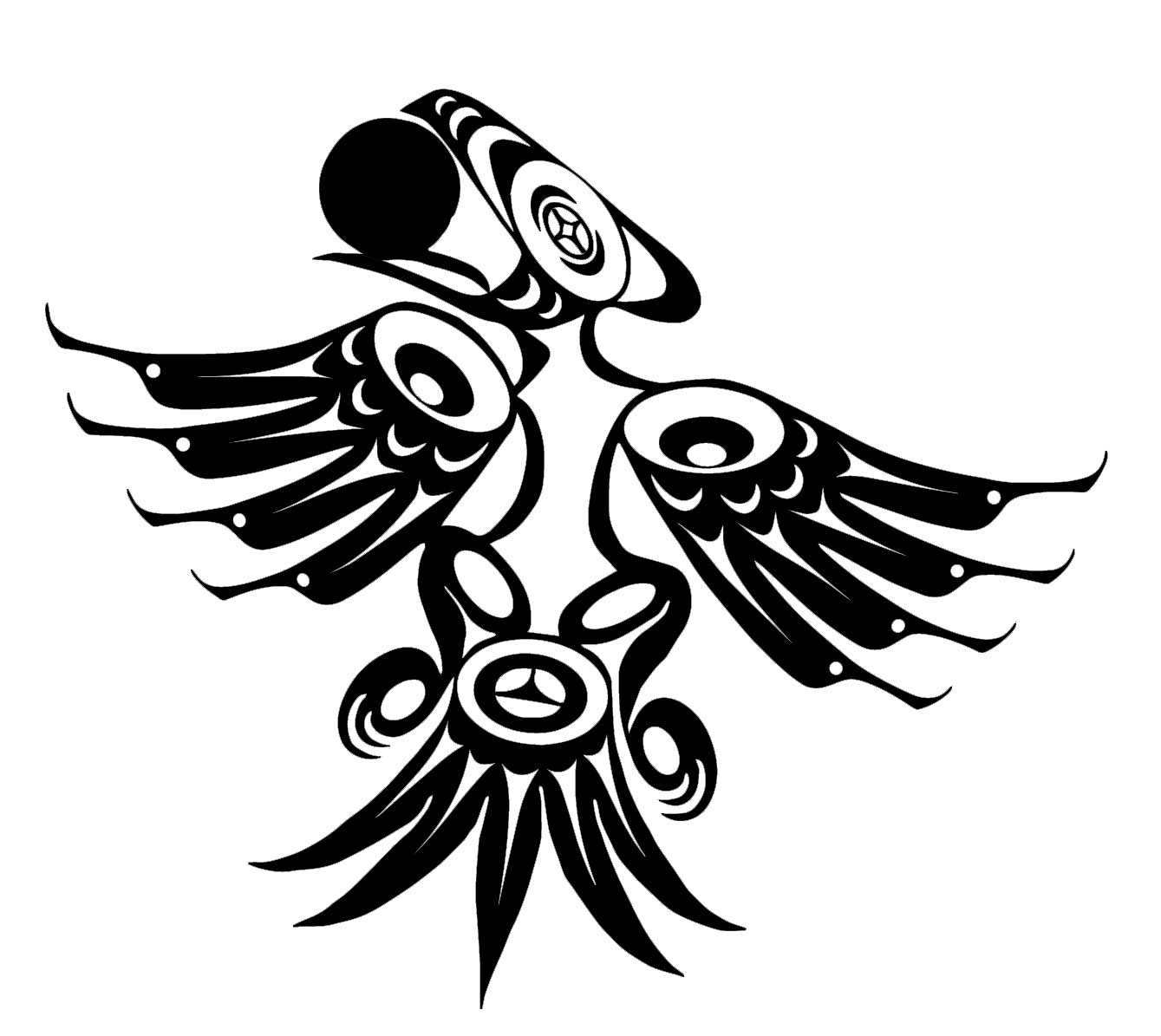October 28, 2018
Last May our Graduating class (class of 2018!) gifted our school the funds to commission the Musqueam artist, Deanna Point, to design an Indigenous Logo for JO. Other funds came from the School and the JO Multi-Cultural club to support this initiative. The indigenous ‘Trickster’ character aligns nicely with our Joker mascot. The logo depicts the ‘Trickster’ stealing the Sun.

Deanna Point Logo for JO
How Raven Stole The Sun/How Raven Brought The Light
A Creation Story Told Along BC’s Coast.
Retold by Brandon Peters.
It is the prerogative of a person on the term they will use when referring to a story on how things came to be. These stories come from every corner, every country, every group of people in every area of the globe. We often call them myths, legends, and creation stories. These stories include but are not limited to stories from the Bible, the Torah, and oral legends from tribal communities found everywhere. In this case, this is a Creation Story told by the Indigenous People on BC’s Coast. This is one version, and there will be many versions told around the Coast of BC.
The story is told of the trickster, Raven. Tricksters in many cases are supernatural beings, capable of being both mischievous and good. They have the power to inflict difficulty, to do good things, to create change and to teach valuable lessons to people.
This is the story. Long ago when the earth was new, it was covered in darkness. This was long before written time, during the time of the transformers. There was no light. There were not even a moon or stars to light the night. Transformers walked among humans. Ravens were white as snow.

Possible wall mural for Fraser & 41st Where the Faces mural was located.
Raven heard stories of a chief who had three boxes containing different lights. Each were kept hidden in a bentwood boxes. Raven decided he wanted to see the fabled lights and decided to change himself into a pine needle. He floated downriver to the place where the chief and his family lived. The chief’s daughter was drinking water by the river. While she was drinking she scooped up the little pine needle and swallowed it while she drank. She became pregnant, and gave birth to a little boy, who was Raven, now in the form of a human. 
The Chief loved the little Raven Child, and wanted to give him anything his heart desired. The chief owned three bentwood boxes. The small one was plain with only a few carvings on it. The medium box had some carvings and pretty paintings on it. The large one was covered in beautiful carvings, paintings and seashells. One day the Raven child asked for the large box, and the chief said no. He gave Raven child the small box. When Raven Child opened the box the stars fluttered about the room before exiting through the smoke stack. Raven Child again demanded the large box, but his grandfather again refused and gave him the medium box. Raven Child opened the medium box and held the moon in his hands, he threw it through the smokestack and it landed among the stars. Raven Child continued to fuss and his grandfather finally allowed him to take a peek at the big box. As soon a Raven Child was able to touch the box, he opened it and turned back into the white Raven. Raven grabbed the sun in his beak and flew through the smoke stack, turning black in the process, and released the sun into the sky, and then there was light.
Raven saw darkness and knew the world needed light. Raven used his powers to bring light to darkness, and to bring balance to this realm. Here at John Oliver Secondary, we continue the tradition of tricksters and Jokers with this new updated and culturally inclusive symbol. This symbol and story are ancient, well before written time.

B&W version
Trickster definition from the BC First Nations Studies textbook:
Transformer characters in First Nations storie can also be tricksters. The trickster is a special, often very witty and humourous character that demonstrates the oppostie characteristics to those that are valued in human beings. Through his actions, he shows people the consequences of acting in an unacceptable manner. In a reverse way, the trickster is a moral, ethical, and philospophical teacher. Stories featuring the trickster often teach a moral lesson. The trickster often also plays a creator role in stories, but he is also a lair, a cheat, lazy, and lustful.
The trickster is ageless, genderless (although in English trickster is usually called “he”), and free of any stereotypes. He can take on the form of a human, an animal, or even the shape of an inanimate object such as a rock, stick, or tree. Having supernature powers, the trickster is not constricted by human limitations, and those same supernatureal powers allow him to explain the creation of places, traditional spiritual rituals and meanings, hunting and fishing rituals, symbolic objects, coming-of-age ceremnoies, and the recordings of important dates and events to his people.
The trickster links human being to the animal world. In First Nations stories, people usually appear in the world after the mythical period where animals were like people. First Nations are able to maintain a respectful and holistic relationship with the natural environment because the animals came first and humans learned from them. In this way, First Nations people see animals as relatives or forefathers who once talked and walked the earth like we do. The trickster serves as one of those lost relatives educating his relatives about the mythical period of long ago.
The trickster stories are often very funny. No one wants to be laughed at like the trickster so the stories act in a proactive, powerful way to prevent wrong-doing and uphold the law. A person in error can save face bylistening to the story, learning the lesson, but not being singled out for wrongdoing.
Text source http://twinkleshappyplace.blogspot.com/2011/06/trickster-definition-from-bc-first.htm
